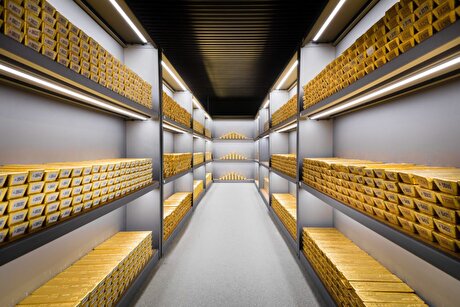
LMEprecious – has the initiative delivered what it set out to for the precious metals market?
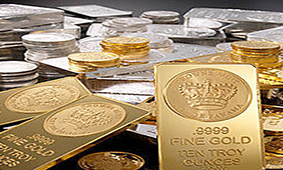

It was designed to provide a liquid and transparent venue for precious metals futures trading and clearing, which could settle into the existing loco London settlement infrastructure.
To develop LMEprecious, we worked with a group of leading industry participants who were committed to providing a London based centre of liquidity to reinvigorate the market, remove barriers to trading based on counterparty credit lines, and establish transparency across the forward price curve.
This was against a backdrop of increased regulatory scrutiny, reporting requirements and cost of trading for the over the counter (OTC) market in a post-2008 financial environment. One year on, has LMEprecious achieved what it set out to?
Transparent pricing
At the heart of the physical gold market, London has always been a financial hub for commodities and the global liquidity centre for precious metals. However, pricing power has been moving away from this traditional pool of liquidity to other markets. Having always held strong and positive relationships with the precious metals community, the LME worked with key stakeholders to create a solution that would bring the bullion market together to provide transparent pricing derived from physical loco London trading activity.
These trusted prices allow participants to directly trade the loco London market and remove basis risks for those using venues in other jurisdictions to hedge outright risk.
A year after launch, LMEprecious provides a real-time five year forward curve (see fig 1). The benefits of trading on-exchange have translated into deep liquidity on-screen, with outright spot gold trading flourishing on LMEselect – our electronic trading platform. We also publish intra-day gold and silver reference prices to help the market manage its price risk throughout the trading day, aligned to periods of peak liquidity. All of this data is free for anyone to access including on the LME’s data service, LMElive.
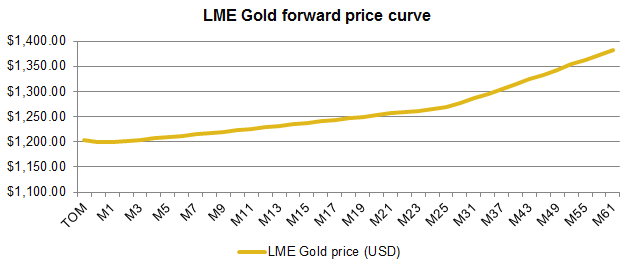
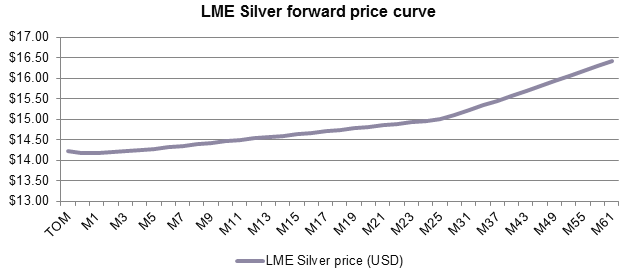
Fig 1. LME Gold and LME Silver forward price curves as of 6 September 2018.
Capital efficiencies of trading on-exchange
Regulators have taken a raft of steps to incentivise the industry to undertake more trading on-exchange and via central clearing because of the security and resilience it can offer to financial markets. Resultantly, costs for trading OTC have increased. Banks involved in precious metals OTC trading are more likely to hold long-dated positions. These are more costly to hold on their balance sheets because of these increasing regulations, particularly regarding capital charges. The costs relate to holding assets on balance sheet and the associated increased credit requirements, as well as increased reporting obligations.
For certain participants, an exchange-traded solution for gold and silver trading and managing exposure to precious metals is more appealing. The cost of holding LMEprecious futures positions, for some, is cheaper partly because of the capital and operational efficiencies central clearing can provide. Participants can offset margin between LME Gold and LME Silver and the number of counterparty credit lines are reduced through netting. As the clearing house has already done know the customer (KYC) checks, costs to carry out due diligence checks on prospective counterparties are also removed.
These capital efficiencies are enabling participants to access the market and do more bullion business. The value of an exchange-traded and centrally cleared solution in London is evident from the significant growth in long-dated open interest on the LMEprecious contracts (see fig. 2).
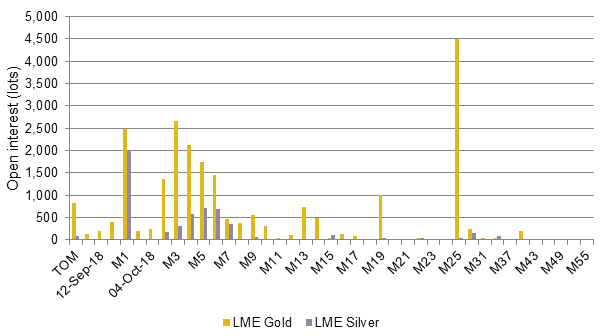
Fig 2. LMEprecious open interest as of 6 September 2018
Fungibility with the OTC market
One of the main priorities in developing an exchange-traded solution for the precious metals market in London was its compatibility with the OTC market. LMEprecious is a unique approach of combining vanilla monthly futures of typical precious metals trading, with the unique prompt date structure of the LME base metals contracts. This creates a flexible trading environment for participants that complements the OTC spot market. Both gold and silver contracts can be traded on a daily basis from T+1 (TOM), T+2 (Spot), through to T+25, and then monthly out to five years.
LMEprecious is physically fungible with the OTC market as the gold and silver contracts settle into London’s existing settlement infrastructure. Gold and silver bullion are also physically held in London, allowing for efficient settlement between LMEprecious and OTC market deliveries.
Plans for the LME’s precious metals offering
By providing confidence and stability to the market and bringing together a variety of participants on one transparent and regulated marketplace, LMEprecious helps increase liquidity in the market. It can reduce the frictional costs of trading, broaden access to the market and consequently allow prevailing prices to transparently reflect supply and demand throughout the trading day. The strong start in these contracts demonstrates the appetite from the industry to trade precious metals on-exchange and to centrally clear.
The LME will be looking to improve access for registered intermediating brokers (RIBs) so they can broke trades for clients and members on an anonymous basis and enter the trade details for gold and silver transactions. We’ll also look to introduce a trade-at-settlement functionality, which will constitute separate order books to allow buyers and seller to match and trade at (or at a number of ticks above or below) LME settlement or reference prices. Finally, in 2019 we’ll be launching gold and silver options to build out the product offering.


Platinum price surges to 11-year high on supply concerns
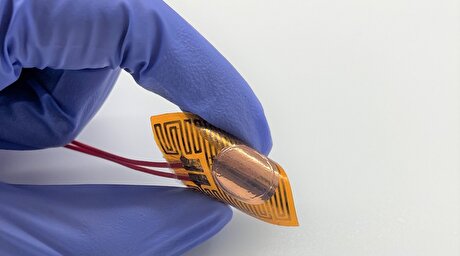
Copper price surges to highest since March record

Mali to restart production at Barrick’s Loulo‑Gounkoto gold mine

Energy Fuels’ rare earth JV in Australia receives regulatory OK

CHART: The brutal economics of EV battery lithium

Cobalt price surges after Congo extends ban

Central Asia Metals ups offer for New World Resources to fend off Kinterra
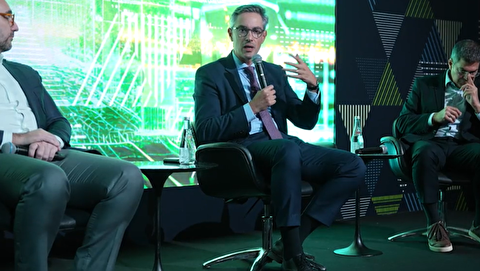
Vale’s new CEO aims to make Brazilian miner the world’s biggest

Magna’s Crean Hill project receives Ontario gov’t funding
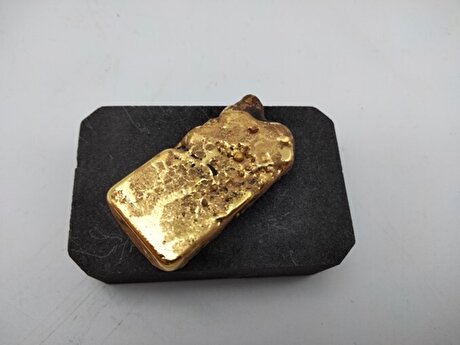
Researchers develop sustainable method to extract gold from ore and electronic waste

Gold miners stack records

First Quantum starts shipping stockpiled copper from Panama mine

Gold price falls 2% on US-China trade agreement

Trump ally eyes Congo mine vital to global tech

Copper price down after $0 Chinese smelter deal

Magna’s Crean Hill project receives Ontario gov’t funding

Cobalt price surges after Congo extends ban

Central Asia Metals ups offer for New World Resources to fend off Kinterra

Kenorland options three gold projects in Ontario to Centerra

Researchers develop sustainable method to extract gold from ore and electronic waste

Gold miners stack records

First Quantum starts shipping stockpiled copper from Panama mine

Gold price falls 2% on US-China trade agreement

Trump ally eyes Congo mine vital to global tech

Copper price down after $0 Chinese smelter deal

Magna’s Crean Hill project receives Ontario gov’t funding

Cobalt price surges after Congo extends ban

Central Asia Metals ups offer for New World Resources to fend off Kinterra












